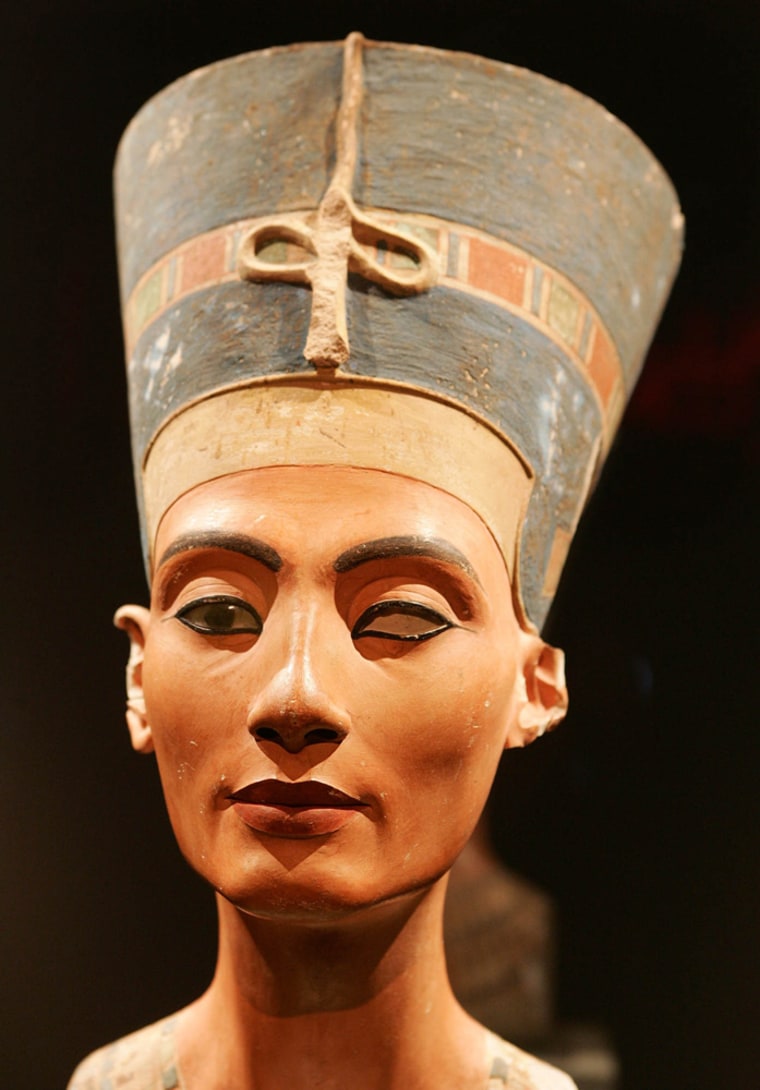Egypt’s antiquities chief says if persuasion doesn’t work, he will fight for an ancient bust of Nefertiti that a Berlin museum maintains is too fragile to ever travel.
Zahi Hawass rattled world museums last week with requests to hand over ancient Egyptian masterpieces, including the Rosetta Stone — some as loans, others permanently.
Hawass told The Associated Press in the interview Wednesday that the goal is to display the pieces in two new museums, especially the Grand Museum, which will open in 2012 next to the Great Pyramids of Giza.
But the bombastic archaeologist — known for wearing an Indiana Jones-style hat — has met resistance from museums reluctant to part with prized artifacts.
“Some people say, ’If we give this bust to Egypt for three months they will not return it,”’ Hawass said of the Nefertiti piece. “I say: We are not the pirates of the Caribbean. We are in the 21st century, we have cooperation with all the countries and they respect our work.”
Over the centuries, thousands of Egyptian antiquities have been taken out of the country — some stolen, some removed by famed archaeologists. Many are now housed in the world’s greatest museums.
At the top of Hawass’ request list are the bust of Nefertiti — wife of the Pharaoh Akhenaten — and the Rosetta Stone, a basalt slab with an inscription that was the key to deciphering Egyptian hieroglyphics. The bust is in Berlin’s Egyptian Museum; the Rosetta Stone is in the British Museum in London.
Hawass said Egypt also was seeking “unique artifacts” from at least 10 museums around the world, including the Louvre in Paris and Boston’s Museum of Fine Arts.
“We would like these 10 pieces to be at the opening of the Grand Museum in the year 2012” as a demonstration of cooperation by museums worldwide, he said.
But he also said that if the Berlin museum refuses to loan the 3,000-year-old bust, he will prove it was stolen. “If Berlin will not agree to give us the loan, we will fight back to bring this bust for good,” Hawass said.
Dietrich Wildung, head of Berlin’s Egyptian Museum, said German officials have long insisted the bust is too fragile to travel. “The structure of Nefertiti’s material, plaster over limestone, is very sensitive,” he told Associated Press Television News.
“Our Egyptian colleagues know very well that Nefertiti will never leave Berlin for two reasons: Firstly, due to reasons of conservation ... Secondly, for security reasons,” Wildung said.
Hawass, however, maintains the bust can be safely transported.
Limited options
Beyond public pressure, it is not clear what Egypt could do to win even a temporary handover of the artifacts. Hawass has sought UNESCO’s help in retrieving them. Another recourse would be courts in the countries where the pieces are held — but that would mean costly legal battles with uncertain results.
The British Museum told the AP it has received the letter from Hawass seeking a loan of the Rosetta Stone and the request would go to the museum’s trustees.
Hannah Boulton, a museum spokeswoman, said the museum loans many objects, but must consider many factors — including where the item is going, for how long, as well as its popularity and fitness for travel.
A spokeswoman for the Louvre said the museum has received Hawass’ letter requesting a zodiac ceiling painting from the Dendera Temple. The request will be considered, Bénédicte Moreau said.
Hawass also has written to request the bust of Anchhaf — the builder of the Chephren Pyramid — from the Museum of Fine Arts in Boston, and the statue of Hemiunu — nephew of the Pharaoh Khufu, builder of the largest pyramid — from Germany’s Roemer-Pelizaeu museum.
Mary Keith of the Museum of Fine Arts said the Boston museum has not received any inquiries from Egypt, but would review any request.
Hawass long has sought items taken from Egypt, recently succeeding in winning the return from France of hair stolen from the mummy of Ramses II.
